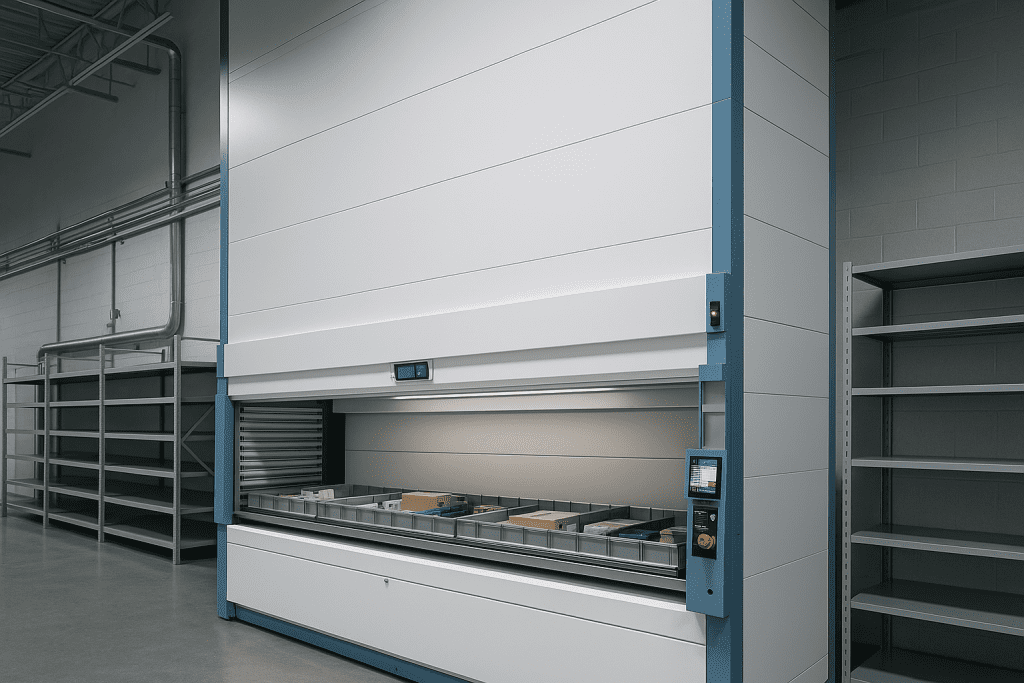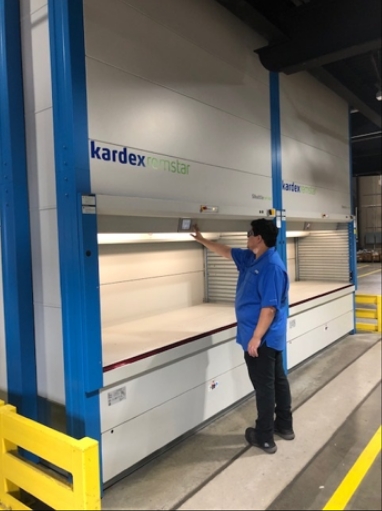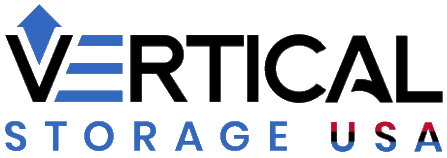In a world where supply chain speed and accuracy dictate competitiveness, warehouse automation is no longer a luxury, but a necessity. Whether you’re a small parts distributor or a high-volume e-commerce operator, investing in automation brings measurable advantages the moment systems go live.
In this article, we’ll cover what you can expect from Day One, the technologies driving these changes, and how solutions like vertical lift modules and automated vertical storage systems can deliver ROI faster than you think.
1. Instant Floor Space Recovery
One of the most visible benefits of an automated warehouse system is space savings. Traditional static shelving consumes unnecessary square footage, often leaving vertical space unused. The moment an automated system is installed—whether a vertical carousel storage system or a mobile aisle storage system—your storage footprint shrinks dramatically.
This is especially valuable for facilities looking to avoid costly expansions or offsite storage fees. Automating storage helps companies recover up to 90% of floor space, allowing them to grow within their existing footprint.
2. Faster Pick Times and Streamlined Workflows
From Day One, automation minimizes the walking and searching associated with manual order picking. Technologies like horizontal carousel storage systems and shuttle-based AS/RS systems bring inventory to the operator, reducing travel time and boosting throughput.
For warehouses dealing with high SKU complexity or labor shortages, automated solutions offer a sustainable way to meet demand—without increasing headcount.
3. Immediate Inventory Accuracy Gains
Most automated systems integrate with WMS and ERP platforms, ensuring accurate real-time tracking from the start. Solutions like the RackBot ASRS and light-directed picking help reduce errors, overstocking, and inventory write-offs.
This level of visibility is especially critical for industries handling serialized items, regulated goods, or frequent audits. Fewer discrepancies mean faster reconciliations and fewer disruptions to your operation.
4. Labor Cost Reductions
Labor is one of the largest operating expenses in warehouse operations. With an automated solution, businesses can reassign employees from repetitive picking tasks to more value-added roles. While automation doesn’t eliminate the need for labor, it reduces reliance on hard-to-fill positions and improves productivity per worker.
Systems like automated vertical storage systems or vertical cold storage also create safer working environments by minimizing bending, reaching, and ladder climbing—helping reduce injury claims and downtime.
5. Shorter ROI Timelines Than You Think
While automation might seem like a major capital expense, the payoff begins right away. Companies often see full ROI in 12–18 months, especially when investing in space-saving solutions like VLMs. For cost-conscious buyers, used warehouse storage equipment can deliver similar performance at a fraction of the price.
Curious about your investment timeline? Explore our vertical lift module price guide to learn what affects cost and how to budget for implementation.
6. Adaptable Infrastructure for Future Growth
Modern warehouses must be ready to scale. Solutions like an automated vertical storage system are modular and customizable, growing with your operations instead of needing to be replaced. For example, adding trays to a VLM or zones to a carousel can accommodate new SKUs, heavier loads, or seasonal surges.
Pairing automation with tailored warehouse storage solutions ensures flexibility for years to come—without overhauling your facility every few years.
7. Better Use of High-Value Space
In dense urban locations or costly lease environments, every square foot matters. Instead of using high-value areas for slow-moving inventory, automation allows you to centralize critical goods and move bulk or backup stock to less accessible spaces.
With inventory management storage solutions, you can dynamically assign inventory by velocity, keeping fast-movers closest to pick stations while long-tail SKUs stay organized and out of the way.
8. Compatibility with Existing Systems
Today’s warehouse automation is built for integration. Whether you use Oracle, SAP, NetSuite, or a proprietary system, automated solutions can sync data for accurate inventory tracking, pick confirmations, and replenishment alerts.
This seamless integration ensures a smoother Day One transition and reduces disruption during go-live.
9. Redundancy and Reliability
Well-designed automation includes system backups and safety overrides to ensure uptime. While maintenance is still required, most issues are predictable and preventable with routine service. And with mobile storage solutions and modular system designs, downtime doesn’t always mean a full operational stop.
Redundancy planning makes your warehouse not just faster—but more resilient.
FAQ: Common Questions About Warehouse Automation
Q: How long does it take to install an automated system?
A: Most vertical lift modules or carousels are installed in 1–3 days, depending on site prep and software setup.
Q: Can I upgrade an existing racking system to automation?
A: Yes. Many facilities start with partial automation—adding VLMs or mobile aisles while keeping some pallet racking in place.
Q: Is used equipment a good option for automation?
A: Absolutely. At Vertical Storage USA, we offer used vertical lift modules that meet modern standards for a lower upfront investment.
Q: What maintenance is required?
A: Most systems require quarterly or semi-annual preventive maintenance, which we provide as part of our service plans.
Conclusion: Start Seeing Benefits from Day One
From reduced labor costs to increased accuracy, automated vertical storage systems provide instant operational benefits. Even small-scale automation projects can lead to major long-term gains in space, labor, and inventory efficiency.
If you’re considering automation but unsure of the timeline, Vertical Storage USA is ready to guide you. We offer turnkey solutions including vertical lift modules, horizontal carousels, RackBot ASRS, and more.
📍 Book a free warehouse consultation »
📄 Or download our Warehouse Optimization Checklist »



